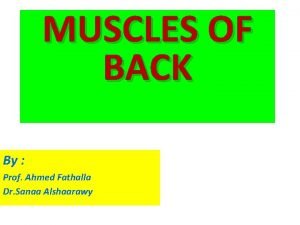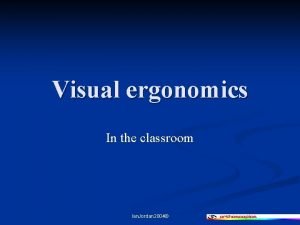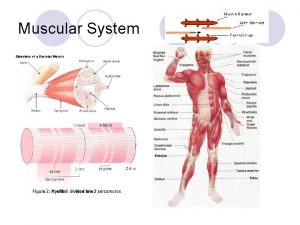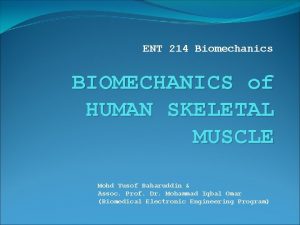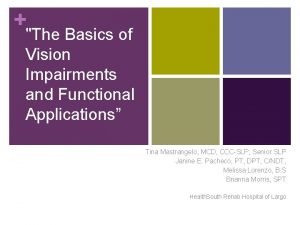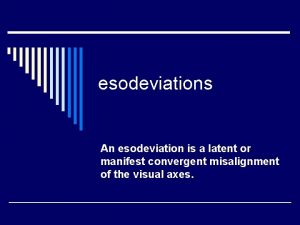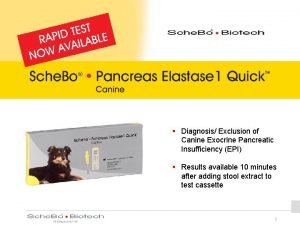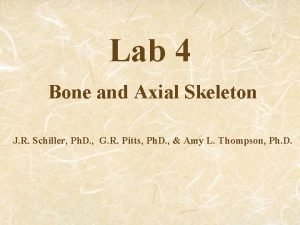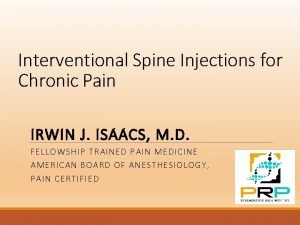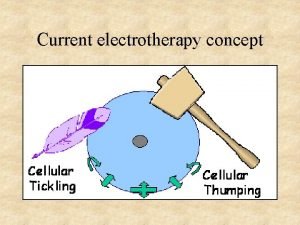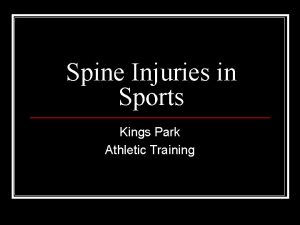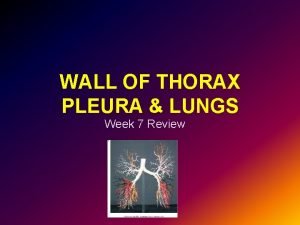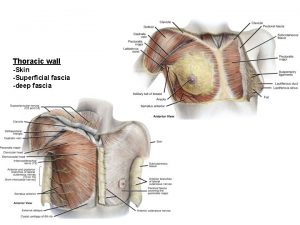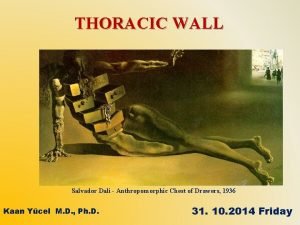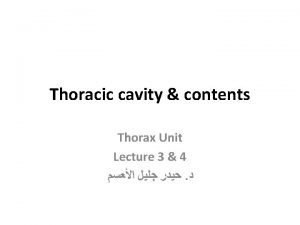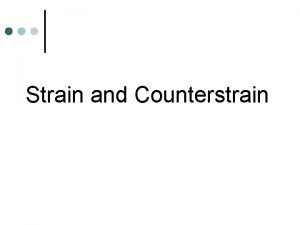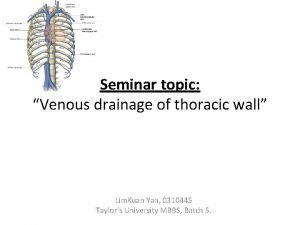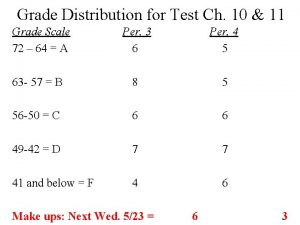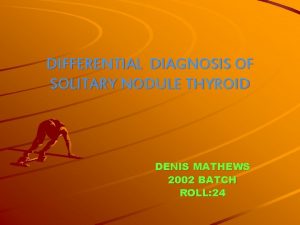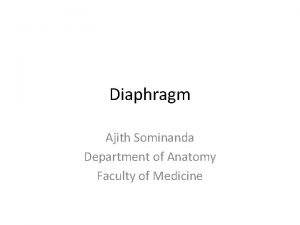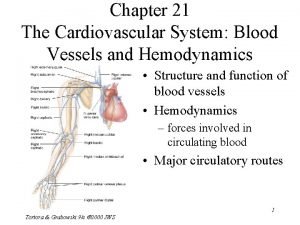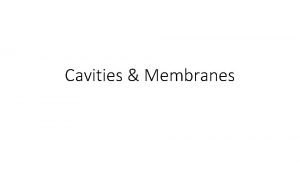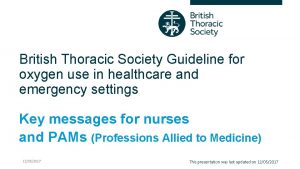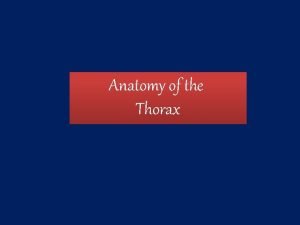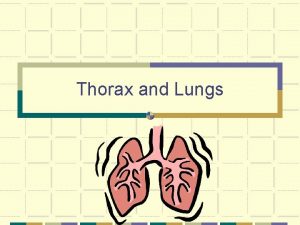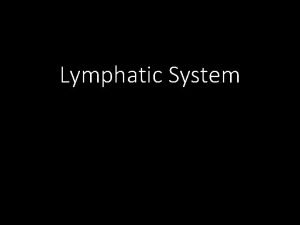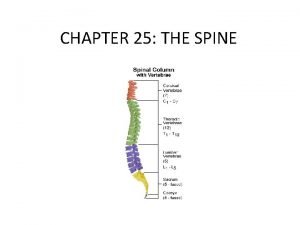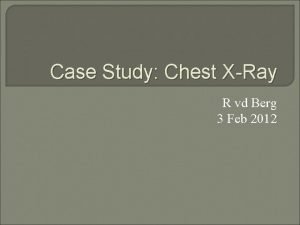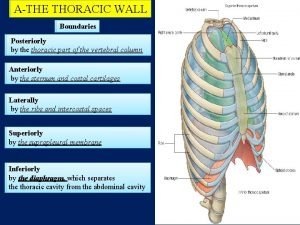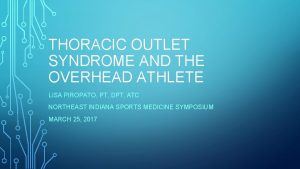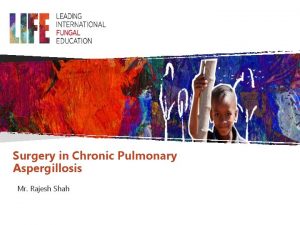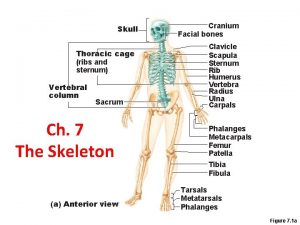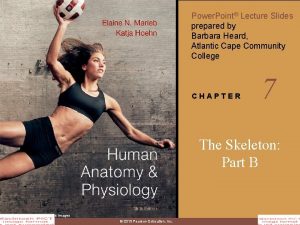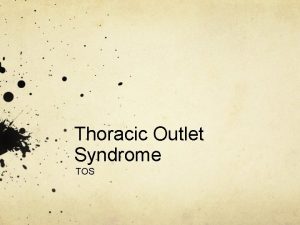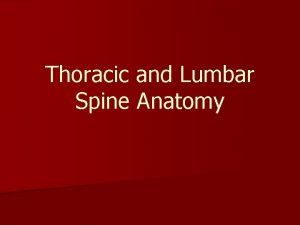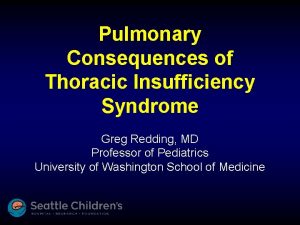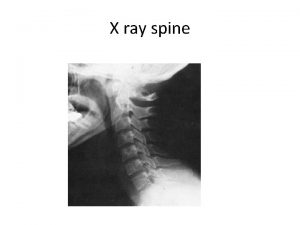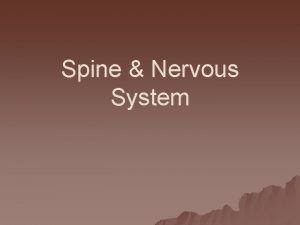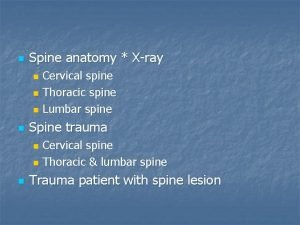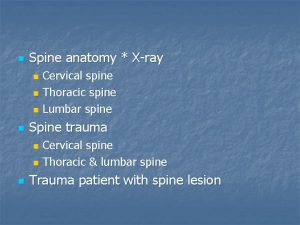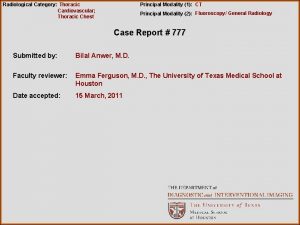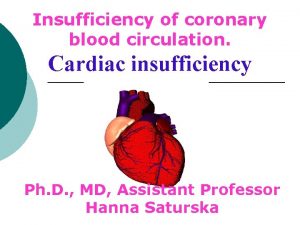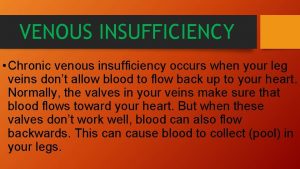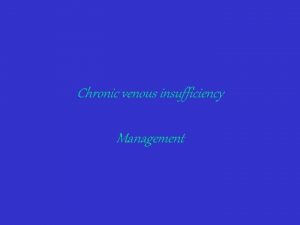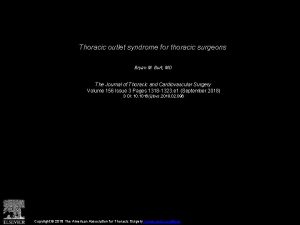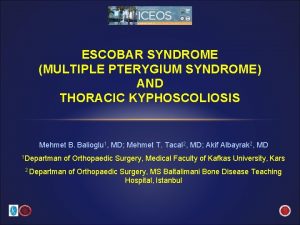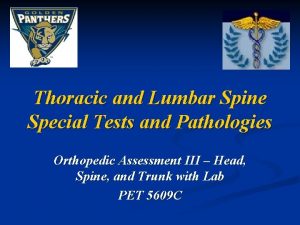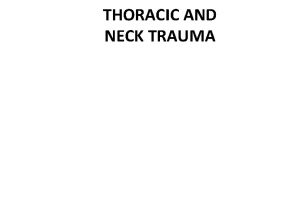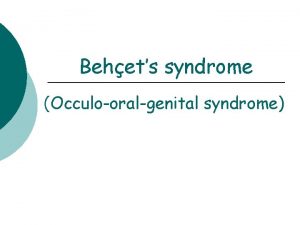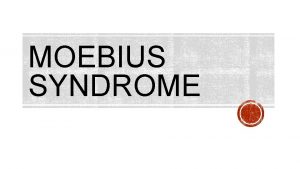Center for Thoracic Insufficiency Syndrome Chest and Spine



















































- Slides: 51

Center for Thoracic Insufficiency Syndrome Chest and Spine Deformity of the Young Patient: The Bottom Line RM Campbell, Division of Orthopaedics, CHOP Director CHOP Center for Thoracic Insufficiency Syndrome

Disclosures • Grant Support – National Organization of Rare Disorders ( NORD) • NORD Medical Advisory Committee member • Spinal Consultant to the FDA • Advocate for inventors/companies trying to develop safe and effective devices for children CTIS

“Growth Friendly” Instrumentation: We’ve got a lot more to use now • VEPTR- approved 2004 • Growing Rods-used past 30 years, now cleared Outcomes • Curve control • Spinal growth • Complications • Await pulmonary outcomes • MAGEC-recently cleared • Await long term mortality • SHILLA-recently cleared CTIS

Bottom Line • Will the child live a normal lifespan? • Will the quality of life be acceptable long term? • Is your treatment outcome better than natural history? CTIS

Natural History of Scoliosis High Death Rate develops later in life well after we stop following them CTIS 3 X Normal 2 X Normal

Long Term Treatment History of Scoliosis A long term survival study is needed CTIS

Long term VEPTR treatment of Jarcho-Levin Syndrome Karlin, J. , Campbell, et al. , JBJS 2014 • 10 spondylocostal dysostosis (SCD) – Age surgery 3 yr, f/u 8 yrs • 19 spondylothoracic dysplasia (STD) – Age surgery 4 yr, CTIS f/u 6. 2 yr

Two surgical approaches • SCD • CTIS STD

STD • T spine height 99. 3 mm ( 62% nl) preop f/u 141 mm (65% nl) ( 24% nl , natural hx, Ramirez, JBJS 2007) • L spine height 67. 2 (69% nl) preop f/u 85. 9 mm (70% nl) CTIS

Pulmonary: STD Respiratory Rate • Pre-op 31 bpm • Post-op 24 bmp Full Ventilator Dependence – 3 pts pre-op – 1 pt at f/u FVC • Earliest post op 52% predicted • Latest f/u 39. 4% predicted (Natural Hx, < 30% predicted, Ramirez, et al. , JBJS 2007) CTIS

Long Term f/u of VEPTR treatment for Jeune Syndrome O’Brien, A, Campbell, et al. , JPO, in press • 24 pts – 2 lost to f/u – 17 > 2 yr f/u • Avg age at surgery 23 months • f/u 8. 4 years (2. 3– 15. 6 yrs) • Infection rate 4. 6%/procedure CTIS

C 1 cervical stenosis in 16%

Jeune’s Syndrome C-1 CTIS Chest

The spine is normal in height in Jeune syndrome CTIS

Scoliosis in 41% of pts preop. The remainder developed curves with treatment CTIS

Respiratory • 7 full time ventilator dependent pre-op – Only 2 at f/u • 3 on room air pre-op – 6 on room air f/u • RR decreased from 35 bpm to 24 bpm • FVC % predicted 34% at first test, 27% at last f/u CTIS

VEPTR Treatment of Jeune Syndrome Mortality • Natural history 70 -80% mortality – Oberklaid et al. , Arch Dis Child. 1977, O’Connor MB, et al. Postgrad Med J. 2008 • VEPTR treated ( n= 22 ) – 4 pts had early demise • 2 with multi-system disease – 68 % are survivors f/u 8. 4 years (2. 3– 15. 6 yrs) CTIS

Can we cure Thoracic Insufficiency Syndrome? no

What is the reality of long term FVC? FVC ( nl =80 -100% predicted) Normals -300 ml TIS Jeune FVC 34% 27% STD FVC 52 % 39. 4 % - 700 ml Treatment? X Birth CTIS 20 yrs 40 yrs 60 yrs -Kory, R et al. , Amer J Med, 1961.

SMA II/III: natural history and fusion FVC Preop CTIS Post Fusion -Chng, et al, J Ped Child Health, 2003

Duchenne MD and Scoliosis Untreated, FVC 5% /yr CTIS -Roberto, et al, SPINE, 2011

Duchenne MD and Scoliosis Treated with Spine fusion, FVC 4%/yr CTIS -Roberto, et, SPINE, 2011

Duchenne MD and Scoliosis Immediate 11% CTIS FVC after fusion -Roberto, et, SPINE, 2011

Is Vital capacity the only thing to consider ? • Forced Vital Capacity – The “sprint” of respiration – Tidal Volume: Breathing at rest CTIS

Like testing total hip replacement outcome by a 100 yard dash CTIS

To treat a disease, you first must understand it

Having instrumentation: Great feeling! Really understanding the disease you are trying to treat: Priceless…

The Rib Hump: Thoracoplasty CTIS

CTIS -Scert, Eur Spine J. , 2014

What really is a Rib Hump? CTIS

True Patho-anatomy of the Rib Hump in Adolescent Idiopathic Scoliosis James Peters BS 1, Sriram Balasubramanian Ph. D 1 1 School of Biomedical Engineering, Science and Health Systems Drexel University, Philadelphia, PA Lucy Robinson Ph. D 2 2 School of Public Health, Drexel University, Philadelphia, PA Robert M. Campbell Jr. MD 3 3 Division of Orthopaedic Surgery, CHOP FUNDED BY THE SCOLIOSIS RESEARCH SOCIETY 2013 NEW INVESTIGATOR RESEARCH GRANT

Results and Conclusions N=13 AIS subjects (10 F, 3 M) Mean age: 14. 15 ± 1. 41 years Cobb Angle: 54. 38± 16. 16 degrees • No significant bilateral differences (in rib pairs) were observed in rib length, rib enclosed area and apparent rib curvature CTIS

@ T 3 @ T 5 @ T 7 SUBJECT #3 SUBJECT #2 SUBJECT #1 WHOLE RIB CAGE CTIS RED – RIGHT BLUE – LEFT RIB @ T 9

The rib hump is the collapsing parasol deformity, not angulated ribs l so a r a p e Open th CTIS

Complications

What degree of device complications are tolerable? The good done outweighs the bad CTIS

We have not defined in growth modulation surgery an important concept Reconstructive Salvage CTIS

Surgical Site Infection Rates • Mackenzie, et al, JBJS, 2013 1347 procedures Growing Instrumentation constructs insertion – Syndromic 28% – NM 10% – Congenital 7% – Infantile/Juvenile Idiopathic 0% revision/lengthening 8 -10% 6. 8% 2. 8% 3. 6 -29% ( mostly growing rods, few VEPTRs included) CTIS

These are all different diseases CTIS

Must compare treatment complications to the complications of natural history, not normal

Device Issues: Ventriculo. Peritoneal Shunts for Hydrocephalus • Infection occurs in 3%– 27% of cases after shunt insertion. – Fernell E et al. Acta Paediatr Scand 1990; 79: 1080 -6. – Kestle J et al. Pediatr Neurosurg 2000; 33: 230 -6. CTIS

V-P shunts • Failure rates 70% in the 1 st year after surgery and 5% annually thereafter • Shunt failure rate has not changed significantly since 1960 • Pudenz RH: Surg Neurol 15: 15– 26, 1981 • Shunt-related hospital admissions account for $1. 4– 2. 0 billion in hospital charges yearly – CTIS Patwardhan Rvet al. Neurosurgery 56: , 2005

Despite complications , it’s better than natural history CTIS

The Timing of surgical treatment? Delay to avoid complications of long term treatment?

Avg. Predicted Normal Vital Capacity at followup: VEPTR tx’d Fused ribs and congenital scoliosis < 2 yr at VEPTR surgery >2 yr with hx fusion CTIS ns -Campbell, Smith et al. , JBJS 2004

Intervene before thoracic function loss is irreversable CTIS

“EVIDENCE BASED MEDICINE” • There’s a lot of weak and misleading “ evidence “ out there • Consider a “Principles Based” medicine approach – Keep it logical and simple, honestly consider all issues, be transparent CTIS

The Principles Based Approach Whatever it takes to have: 1. Biggest 2. Most Symmetrical 3. Most Functional Thorax by skeletal maturity CTIS

Some final comments • Be critical about new things – Everything looks good that first 5 years • Be especially critical about your own ideas – Being your own worst critic helps you anticipate problems and find early solutions • Everything fails one way or another – Design safe failure modes CTIS

The Bottom Line • We need to learn more about the diseases we are treating • We need long term follow-up – Mortality – Pulmonary outcomes, PFTs and clinical • We need realistic treatment goals – Quality of life – Extension of life CTIS

Thank You! CTIS
 Scheuermann’s disease
Scheuermann’s disease Muscles of thoracic spine
Muscles of thoracic spine Muscles of thoracic spine
Muscles of thoracic spine Convergence insufficiency latham
Convergence insufficiency latham Muscle contraction types
Muscle contraction types Active insufficiency
Active insufficiency Eye lesions
Eye lesions Pseudo convergence insufficiency
Pseudo convergence insufficiency Chello.hu
Chello.hu Esodeviations
Esodeviations Epi 4 dogs
Epi 4 dogs Emory spine center
Emory spine center Imaginary line through body
Imaginary line through body Nine regions of the abdominopelvic cavity
Nine regions of the abdominopelvic cavity Vertebral cavity
Vertebral cavity Lumbar vertebrae characteristics
Lumbar vertebrae characteristics A short backboard or vest-style immobilization
A short backboard or vest-style immobilization Chapter 21 caring for head and spine injuries
Chapter 21 caring for head and spine injuries Chronic pain management irwin
Chronic pain management irwin Harborside spine and sports
Harborside spine and sports Back pain kings park
Back pain kings park Sentinel injuries in infants are
Sentinel injuries in infants are Which of the following elevates the ribs?
Which of the following elevates the ribs? Deep fascia of thorax
Deep fascia of thorax Thoracic aperture
Thoracic aperture Below the thoracic cavity is what area
Below the thoracic cavity is what area Manybrium
Manybrium Tfl counterstrain
Tfl counterstrain Internal thoracic vein
Internal thoracic vein Where is the sternal notch
Where is the sternal notch Pig thoracic cavity diagram
Pig thoracic cavity diagram Extrinsic muscles
Extrinsic muscles Rule of 12 in thyroid
Rule of 12 in thyroid Ajith sominanda
Ajith sominanda Thoracic kyphoscoliosis definition
Thoracic kyphoscoliosis definition Chest x ray anatomy
Chest x ray anatomy Branches of aorta
Branches of aorta Thoracic membranes
Thoracic membranes British thoracic society oxygen guidelines
British thoracic society oxygen guidelines Intercostal muscles
Intercostal muscles Thoracic cage configuration
Thoracic cage configuration Pouchlike structure at the start of the thoracic duct
Pouchlike structure at the start of the thoracic duct Thorcic spine
Thorcic spine Pulmonary aortic window
Pulmonary aortic window Sternal angle of louis
Sternal angle of louis Thoracic skin
Thoracic skin Thoracic outlet wedge pillow
Thoracic outlet wedge pillow Neurogeen thoracic outlet syndroom
Neurogeen thoracic outlet syndroom Rajesh shah thoracic surgeon
Rajesh shah thoracic surgeon Transverse costal facet
Transverse costal facet Rib tubercle
Rib tubercle Kati mori london marathon
Kati mori london marathon


